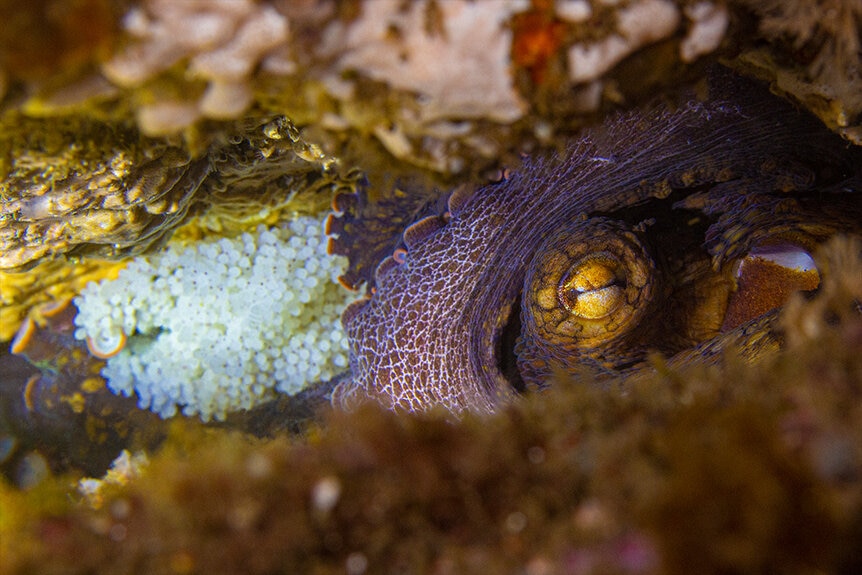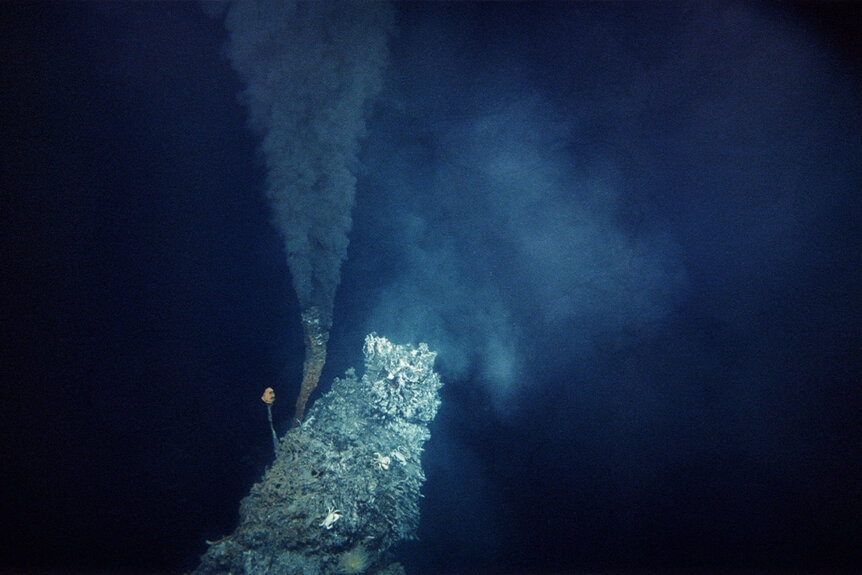Create a free profile to get unlimited access to exclusive videos, sweepstakes, and more!
Why Thousands of Octopuses Would Rather Be at a Volcanic Hot Spring Under the Sea
Scientists find "octopus garden," a nursery around volcanic vents in the Pacific Ocean.

Generally speaking, when we think about contact with creatures from another world, we tend to look to the skies. In the world of Pacific Rim and Pacific Rim: Uprising, however, contact came from the sea. In 2013, a rift opened up in a fictional version of the Pacific Ocean, with a flood of interdimensional monsters on the other side. Oversized, tentacled monsters with horrifying beaks and crushing claws emerged from the deep to invade our world.
RELATED: Harvard Astronomer Hunting for UFOs on the Ocean Floor May Have Found… Something
That might have been a curtain call for humanity, if not for global cooperation and the development of giant combat mechs called Jaegers, purpose built for punching mega-squid. In the real world, we haven’t discovered any gigantic people eaters underwater (yet), but researchers have found a rift in the Pacific teeming with thousands of tentacled sea creatures.
Thousands of Octopuses Gathered Near Volcanic Cracks in the Pacific
Octopuses (Octopi? Octopodes?) aren’t aliens, but they’re pretty close. They’re about as different from humans as is possible on Earth and they’re shockingly smart. If we’d found them, for instance, in the oceans of Enceladus instead of Earth, they’d tick almost every box we’d expect for aliens. And studying them helps us understand our own planet, and how life might exist in environments different from our own.
In 2018, researchers from NOAA’s Monterey Bay National Marine Sanctuary and Nautilus Live witnessed thousands of octopuses in a mass migration. They were headed to a previously unknown nesting ground off the coast of California. Researchers carried out 14 dives near the base of an extinct underwater volcano called Davidson Seamount, using a remotely operated vehicle (ROV), over the course of several years, and published their findings in the journal Science Advances.
The nursery is one of only a few known “octopus gardens” in the world and is dominated by the pearl octopus (Muusoctopus robustus), so named because they look like pearls dotting the seafloor when observed from above. The nursery sits roughly 3,200 meters (10,500 feet) beneath the ocean surface where the waters are piercingly cold.
During early dives, the team noticed shimmering water near the seamount, indicating a temperature flux and the presence of previously unknown thermal springs. Davidson Seamount is an extinct volcano but there’s still some thermal activity creeping up from beneath the seafloor. Those rifts in the ground don’t unleash kaiju, but they do warm the waters around them.
RELATED: 8 arms to smack you: ‘Spiteful’ octopuses may punch fish just because they can
Ambient water temperatures in the area hover around 1.6 degrees Celsius (35 degrees Fahrenheit), just above freezing. However, the water near the thermal cracks are about 11 degrees Celsius (51 degrees Fahrenheit), still cold but much more manageable, especially for an octopus.
Octopuses are cold blooded and deep sea octopuses live slower lives, starting before they’re even born. Because of the frigid temperatures of the deep, researchers estimated the incubation period of the pearl octopus between 5 and 8 years. At the Pacific deep sea nursery, however, babies hatch in under two years thanks to the metabolic boost offered by warmer waters.
During the course of their 14 dives, researchers counted more than 6,000 individuals, identified by scars and other marks. That’s just what they were able to count; researchers estimated more than 20,000 individuals nesting together at the seamount. Moreover, they didn’t observe any hunting or feeding behavior or any adolescents. There were only mating adults, eggs, and hatchlings, suggesting the site is used exclusively for mating and reproduction.
Of course, that many octopuses all in the same place inevitably attract predators and scavengers. And if they’re patient, they’re in for a buffet. That’s because octopuses die once they’ve reproduced. Once the next generation is assured, thousands of octopus corpses litter the nursery, providing a smorgasbord for enterprising scavengers.
Catch Pacific Rim: Uprising, available from Universal Pictures.




























